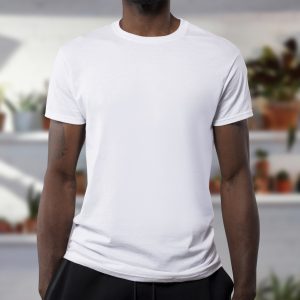Are you worried that most of your graphic tees are fading or cracking after wearing and washing them a few times? It can be quite frustrating. Although the durability of the design depends on factors such as the printing process and the type of shirt it’s being printed on, it’s also highly dependent on how you handle your tees, especially when it comes to washing. Here are a few pointers on how to wash graphic tees.
How to Wash Graphic Tees
This article points out some of the tips on how to wash your graphic tees so they remain as good as new for longer. It emphasizes the need to avoid using harsh detergents and washing with cold instead of hot water among other things.
Always Use Cold Water
Unless you need to disinfect hospital sheets or towels, there’s really no reason why you should wash your clothes in hot water. Hot water is not gentle on fabric and will destroy it over time. Cold water, on the other hand, is gentle on fabric and also gets your clothes clean.
Don’t Use Strong Detergents or Bleach
Like hot water, strong detergents and bleach are harsh on fabric. If you need to get rid of spots on your tee, consider a light stain remover as it should get the job done. It’s also crucial that you use mild detergents on your graphic tees.
Wash Them Inside Out
A general rule of thumb, especially when it comes to graphic tees is to turn them inside out before placing them in the washing machine. That helps to keep the design intact and lessen the fading. If you want the design to last even longer, make sure it doesn’t get into contact with the washing machine often to prevent the ink from getting strained.
Also, avoid washing your graphic tees after every use. That may seem extreme but think of it this way – each time you wash and dry your tees, you’re speeding up their aging process. It goes without saying that if your tee is really dirty you should go ahead and wash it. But if you’ve only worn it for an hour or two and it’s not dirty, consider folding it and putting it back in the closet.
Don’t Put Your Tee in a Hot Dryer
When drying your graphic tee, don’t set the dryer to the highest heat level. Another useful trick is to remove the tee before it’s totally dry and letting it dry naturally either in a clothing line outside or anywhere else. High heat is possibly your graphic tee’s worst enemy.
Wash Similar Clothes Together
If you’ve had a white design on your red shirt turn yellow after a few washes, the chances are you washed it together with some yellow attire, and the yellow color found its way into your white design. That’s why it’s crucial that you wash only shirts with similar colors together.
Bottom Line
Don’t forget the basics on how to wash graphic Tees – wash them in cold water, don’t wash them together, don’t use bleaching agents, let them dry naturally and use mild detergents. That’s how your graphic tees will maintain their printed designs.

 garments properly. Here are some of the things that you must avoid:
garments properly. Here are some of the things that you must avoid:
 printing will finally look like an end product. Mostly, transfer printings are plastic and they attach very well to synthetic fabrics like polyester.
printing will finally look like an end product. Mostly, transfer printings are plastic and they attach very well to synthetic fabrics like polyester.